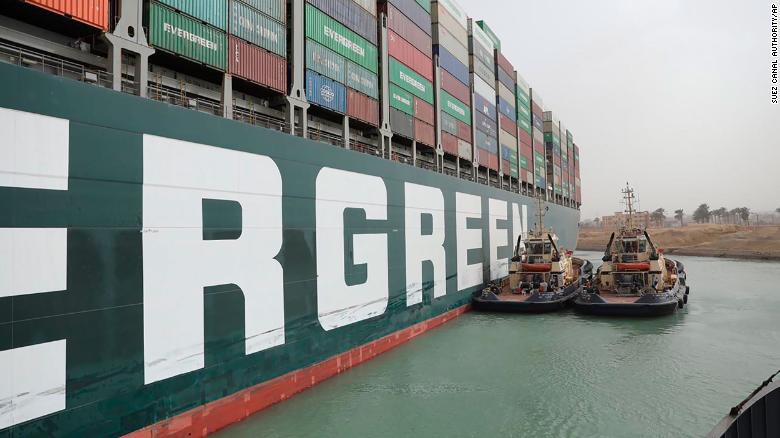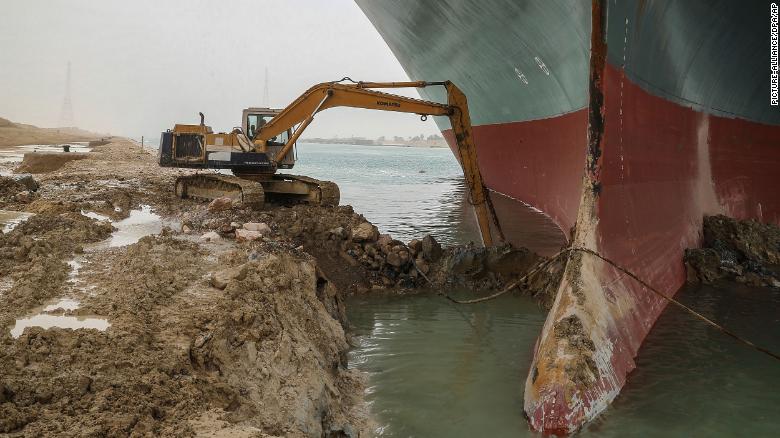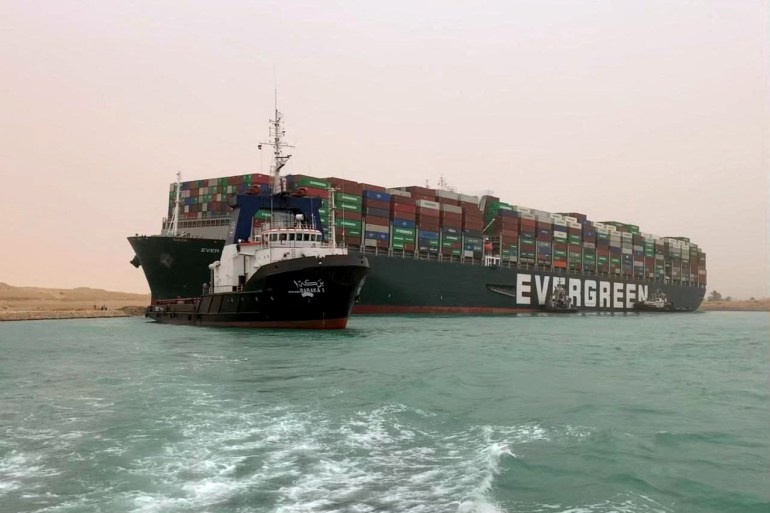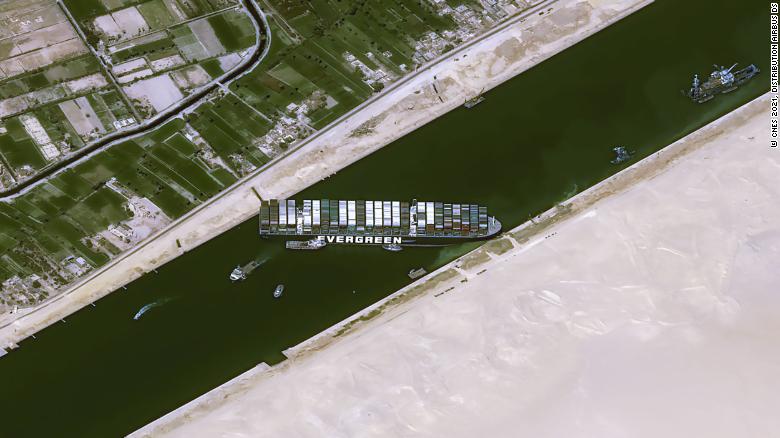Billions of dollars in trade have ground to a halt. There’s no easy solution and no end in sight. And you thought traffic jams on the LDP were bad.
UPDATE: The ship has been dislodged and freed after blocking the canal for nearly a week. Shipping and other marine traffic is once again moving freely through the Suez Canal.
It is one of the world’s longest container ships, the length of four football pitches, or roughly as long as the Petronas Towers are high (at least without the decorative spire). The Golden-class Ever Given, 400 m (1,312 ft) long and 59 m (193 ft) wide, can carry over 20,100 shipping containers and has a massive displacement of just under 221,000 tonnes. While a few container ships are the same length (11 such ships in this class were built), and some can carry more containers, there is no ship in current operation that’s longer than this one.

On Tuesday, March 23, the Ever Given ran aground in the Suez Canal as it was buffeted by a fierce sandstorm and strong winds of up to 74 km/hr. With visibility and navigation affected by the sandstorm and steering control diminished by the high winds, the immense ship drifted sideways, and its keel collided with the bottom of the canal, one of the world’s busiest and most important trade arteries.
The 400 m-long ship is now turned sideways and hopelessly stuck, completely blocking the canal at about a 45-degree angle, preventing shipping traffic from passing through in either direction. Already, over 200 ships on either side of the canal have been obstructed, a number that is likely to rise. Estimates are that the jam is stopping almost US$10 billion a day in shipping traffic.
WHAT IS BEING DONE?
A re-floating operation is underway, but experts have warned it could take days or even weeks to free the ship. A senior canal pilot at the Suez Canal Authority told the media that re-floating the massive vessel is “technically very complicated” and could take days at a minimum – and that’s if things go well.
Freeing the Ever Given could take “days to weeks, depending on what you come across,” agreed Peter Berdowski, the CEO of Boskalis, whose sister company SMIT Salvage is now working on the problem. Berdowski explained that his company had determined it was simply not feasible to dislodge the ship with its current cargo complement. “The ship with the weight that it [has] now has is impossible to pull,” he said. “You can forget about that.”

Fuel, water held as ballast, and some of the 20,000 shipping containers onboard are now being removed to lighten its load so tugboats can try to dislodge the ship at the next high tide. Earlier attempts to do this have not succeeded. Meanwhile, heavy equipment is being used in an attempt to dig out the ship’s bow. Other equipment may be utilised to flush away the sand banks in which the ship is stuck.

WHAT IS THE SUEZ CANAL?
Among the world’s most critical shipping routes, the Suez Canal is a 193.3-km man-made waterway in Egypt. The canal functionally connects Europe and Asia, allowing shipping to transit without going around the southern tip of Africa.
The distance saved is significant: A journey from London to the Arabian Sea, for example, is reduced by some 8,900 km by using the Suez Canal. Most ships realise a distance savings of at least 7,000 km.
The Suez Canal opened in November 1869, after a costly and lengthy construction period spanning just over 10 years. Since then, it has been expanded and its depth increased. Currently, the canal can accommodate ships with a maximum beam (width) of 77.5 m (though the waterway itself is considerably wider), and a maximum draft (the distance between the waterline and the bottom of the hull) of 20.1 m.
Unlike the Panama Canal, which uses a complex series of locks to raise and lower ships between stretches of the waterway with differing levels, the land which the Suez Canal traverses is quite flat, so no locks are needed or used. Even though the Suez Canal is over twice the length of the Panama Canal, from an engineering standpoint, the former is significantly more straightforward.
The Suez Canal normally transits about 50 vessels per day, although at times the number can be much higher – accounting for some 12% of world trade, according to some reports. The canal is particularly important as an artery for oil and liquefied natural gas, enabling these shipments to get from the Middle East to Europe with relative ease.
“The nightmare scenario, then, is for this crucial route to be blocked – which is exactly what has now happened with the stranding of the Ever Given,” according to the BBC. Of course the question now is how long the obstruction will last. A prolonged delay would create serious problems for transportation companies, as alternate routes can add two weeks or more to shipping times.

"ExpatGo welcomes and encourages comments, input, and divergent opinions. However, we kindly request that you use suitable language in your comments, and refrain from any sort of personal attack, hate speech, or disparaging rhetoric. Comments not in line with this are subject to removal from the site. "





















